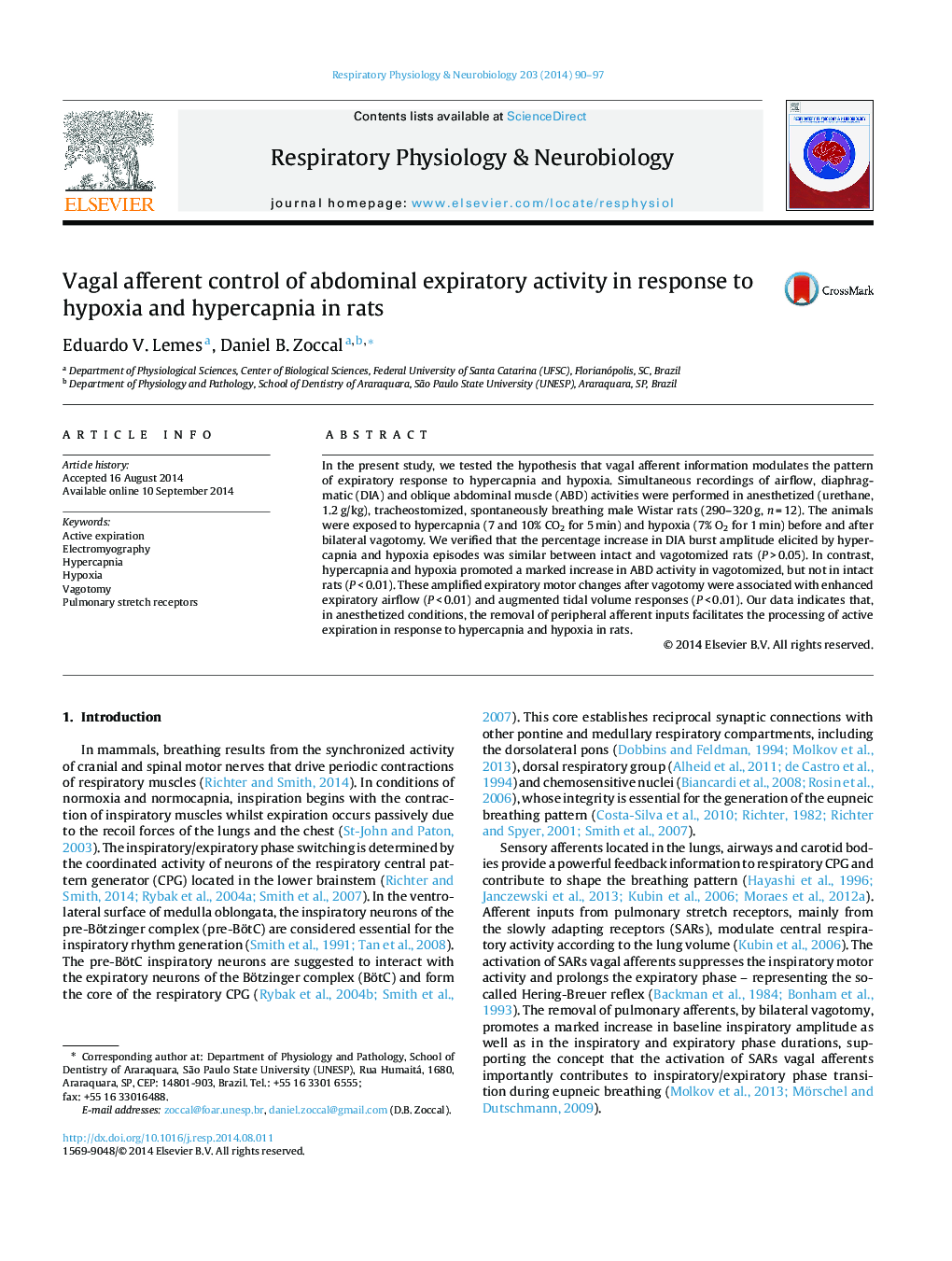| Article ID | Journal | Published Year | Pages | File Type |
|---|---|---|---|---|
| 5925933 | Respiratory Physiology & Neurobiology | 2014 | 8 Pages |
Abstract
In the present study, we tested the hypothesis that vagal afferent information modulates the pattern of expiratory response to hypercapnia and hypoxia. Simultaneous recordings of airflow, diaphragmatic (DIA) and oblique abdominal muscle (ABD) activities were performed in anesthetized (urethane, 1.2 g/kg), tracheostomized, spontaneously breathing male Wistar rats (290-320 g, n = 12). The animals were exposed to hypercapnia (7 and 10% CO2 for 5 min) and hypoxia (7% O2 for 1 min) before and after bilateral vagotomy. We verified that the percentage increase in DIA burst amplitude elicited by hypercapnia and hypoxia episodes was similar between intact and vagotomized rats (P > 0.05). In contrast, hypercapnia and hypoxia promoted a marked increase in ABD activity in vagotomized, but not in intact rats (P < 0.01). These amplified expiratory motor changes after vagotomy were associated with enhanced expiratory airflow (P < 0.01) and augmented tidal volume responses (P < 0.01). Our data indicates that, in anesthetized conditions, the removal of peripheral afferent inputs facilitates the processing of active expiration in response to hypercapnia and hypoxia in rats.
Related Topics
Life Sciences
Biochemistry, Genetics and Molecular Biology
Physiology
Authors
Eduardo V. Lemes, Daniel B. Zoccal,
